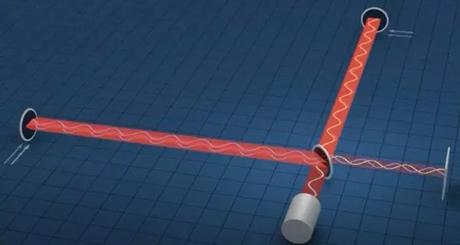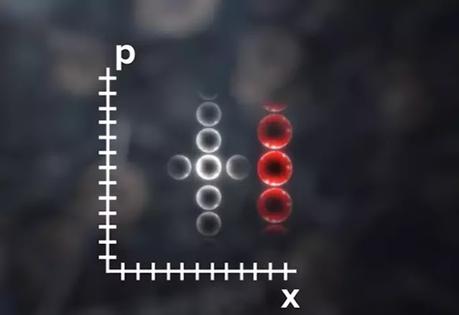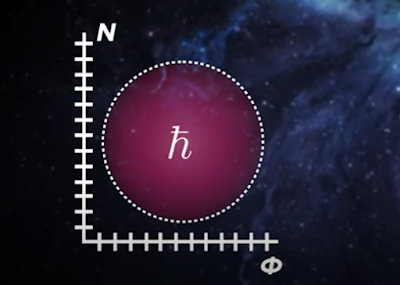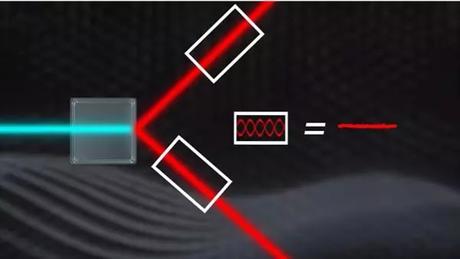Quantum mechanics forbids us from measuring the universe beyond a certain level of precision. But that doesn’t stop us from trying. And in some cases succeeding, by squeezing the Heisenberg uncertainty principle to its breaking point.
Engineers have gifted physicists with some pretty incredible machines for measuring the universe. For example, the recent g-2 experiment for measuring the muon’s interaction with quantum fields is good to one part in a billion And also pretty recently we have the measurement of gravitational waves by LIGO.

In that case, the lengths of LIGO’s 4km long arms changed by less than 1-10,000th the width of a single proton. Our measurements have become so precise that we’re starting to run up against the absolute quantum limit - the limit defined by the Heisenberg Uncertainty Principle.
But neither engineers nor physicists are content to let mere fundamental laws of nature stand in their way. Today we’re going to see how the uncertainty principle can be hacked to make measurements more precisely than should ever be possible.
The Heisenberg uncertainty principle tells us that there exists a fundamental unknowability to nature - an absolute limit to how precisely we can measure the universe. It says there are pairs of properties that can't simultaneously be known to perfect precision. Perfect knowledge of a particle's position means its momentum is undefined.
The exact measurement of its energy means its location in time is blurred. In quantum mechanics, we call these pairs of properties complementary variables, and the uncertainty principle tells us that the uncertainties in our knowledge of such a pair, when multiplied together, must always be greater than a particular very tiny number.
Werner Heisenberg discovered the uncertainty principle when he was inventing his version of quantum mechanics back in the 1920s. That version is called matrix mechanics, but we get the same uncertainty principle using the wave mechanics of Schrodinger. And actually, that’s probably the most intuitive way to think about it - so to get an idea of the fundamental source of the uncertainty principle.
But when Heisenberg first came up with the relation he didn’t realize it was so fundamental. He hit on it while considering what would happen if he wanted to measure the position of a particle with a photon.

He reasoned that the photon would give the particle a momentum kick, which would account for greater uncertainty in its momentum after the measurement. And to measure the position more precisely, you would need a higher energy photon, which would kick the object even harder, causing an even greater uncertainty in the momentum.
Basically, he thought the uncertainty principle arose as a result of the measurement disturbing the system. Heisenberg took his new idea to Niels Bohr- his mentor and one of the co-founders of quantum mechanics. Bohr was excited by the discovery but vehemently disagreed with Heisenberg’s interpretation.
He thought the uncertainty principle was hinting at a far more fundamental law of the universe. He viewed it as an example of a principle of reality that he called “complementarity.” Bohr developed this principle when trying to reconcile the perplexing apparent contradictions in quantum mechanics. For example, how can a quantum object sometimes be a “wave” and sometimes be a “particle?” In a sense, it is both, and in a sense, it is neither - rather, there are the impressions we receive as large-scale, classical creatures.
Also Read: Why Carbon Nanotubes are the Next Big Thing in Technology?
A quantum object can project its nature upto our classical world in one way or another, but not both. It depends on our choice of how to measure it. The universe only reveals to us the answers to the questions that we ask it, and there are certain questions that we can’t ask simultaneously. This is a very deep topic that we’re going to come back to. For now, let’s return to the topic of the day.
The Heisenberg uncertainty principle prevents us from being able to know everything about a quantum state all at once. But we can sometimes game Heisenberg’s limit because sometimes we care a lot more about one property than the other. Remember, the uncertainty principle places a lower limit on the product of the uncertainties of pairs of complementary properties.
So, for example, if we only care about a particle’s position we can in principle measure it to extreme precision as long as we’re happy to have no knowledge of its momentum. That’s not as easy as it sounds - normal quantum states tend to share the uncertainty between complementary partners fairly evenly. But over the past few decades we’ve developed theoretical and engineering tricks that enable us to manipulate quantum states to push the limits of the uncertainty principle.
We’re going to focus on LIGO as an example. The Laser Interferometer Gravitational-Wave Observatory measures ripples in the fabric of space caused by cataclysmic events up to billions of light-years away. Those ripples are tiny by the time they reach Earth - they change lengths by something like 1 part in a billion trillion in the most powerful cases. For fainter gravitational waves we quickly run up against the Heisenberg limit.
Let’s quickly review how LIGO works. The twin interferometers in Washington State and Louisiana both consist of a pair of 4-km-long arms at right angles. Laser light is split and sent along those paths and then later recombined in such a way that the electromagnetic waves of these laser beams destructively interfere.
By that, we mean that the peaks of one wave line up with the troughs of the other, canceling out perfectly. But if a gravitational wave passes through the interferometer, the relative lengths of the two paths change in a very particular way. the recombined laser no longer perfectly cancels, and so flashes of light are observed.
This measurement is incredibly sensitive to the path lengths - but that means it’s also sensitive to the phase of the light waves. Phase refers to the relative positions of the peaks and troughs of the waves. Any variation in the relative phase of the two beams can generate a flicker in the signal. And this is where the uncertainty principle comes in. Because there’s always an inherent uncertainty in any quantity, the phases of the two beams never really perfectly match up.
Quantum fluctuations result in a low level of noise - a flickering signal where you should see darkness. And that noise will obscure faint gravitational-wave signals. If quantum fluctuations in the phase of the laser beams are larger than the change in the arm lengths due to a gravitational wave, then we’ll never see those waves. Unless we can hack the uncertainty principle.
Also Read: Scientists Created Something That Breaks The Laws Of Physics
In this case, the complementary variables in question are not position and momentum, but rather phase and amplitude. By amplitude, I meant the number of photons making up the beam. To improve our ability to detect faint gravitational waves we need to reduce the uncertainty in the phase of the laser beams. That would enable us to line up those waves more perfectly to reduce quantum fluctuations. But we don’t care so much about uncertainty in the amplitude.
Normal light from a laser beam obeys the Heisenberg uncertainty principle in a very specific way—it has equal amounts of uncertainty in its two complementary variables.

We can show this in the so-called “phase-space”—in this case, phase is plotted on the x-axis and amplitude is plotted on the y-axis—as a fuzzy circle of probability, where the area of the circle is proportional to Planck’sconstant, satisfying the uncertainty principle. But it doesn’t have to be this way.
By playing quantum tricks on the light, we can squeeze the uncertainty in one direction at the cost of greater uncertainty in the other. In phase space, this amounts to a shrinking of the uncertainty in one dimension, and a corresponding stretching in the opposite dimension, so that the total area of this squeezed probability disk remains the same.
Light in which uncertainty has been manipulated in this way is called squeezed light. In the case of LIGO, the phase of the light is squeezed - its precision increased - at the expense of increased uncertainty in amplitude. This phase squeezing is achieved by using quantum entanglement.
The laser is sent through a special material called a non-linear crystal, which converts incoming photons into pairs of photons. Those outgoing photons have entangled phases - the relative positions of their peaks and troughs are correlated. Those pairs are sent down the separate arms of the interferometer.

When they’re recombined, they still have quantum fluctuations in the phase, but the fluctuations between the two beams are now correlated so that they cancel out more perfectly. Less flickering due to random phase shifts means that we can see real signals due to much weaker gravitational waves. LIGO expects that using squeezed light in the next upgrade will allow them to detect up to 50% more gravitational wave events - events from further away, and involving lower-mass mergers of black holes and neutron stars.
Of course, there’s always a price - you pay for the improved phase precision with more uncertainty in the number of photons traveling in your laser beam. And that introduces its own type of noise- radiation pressure noise as these photons transfer energy to the mirrors in the interferometer. But that noise is less of a problem than the phase uncertainty, at least for the higher frequency gravitational waves.
There is always a price, but the price is worth it if you invest your uncertainty in the right place. The use of squeezed light is just one example of how quantum mechanics can be used to increase measurement precision. Scientists have demonstrated this same principle in other systems like entangled atomic clocks, which may one day massively enhance the precision of our GPS satellites.
Our ability to measure the world has an ultimate limit. But as long as we’re willing to bend a few fundamental laws - in this case, the Heisenberg uncertainty principle - we can push the limit beyond what we thought possible to force ever more certain measurements of this uncertain space-time.

